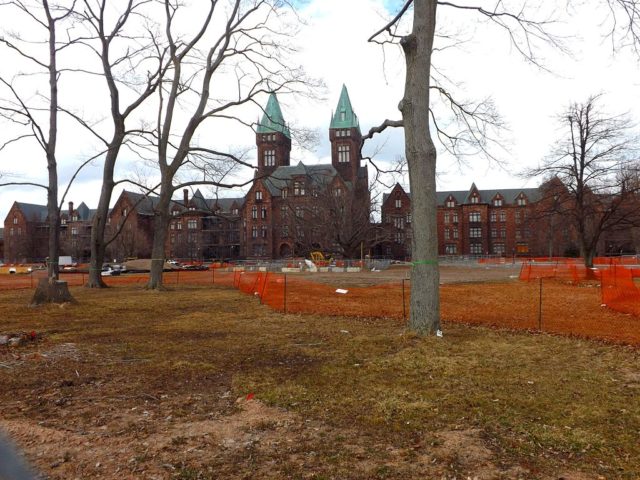The Richardson Olmsted Complex was a state hospital in Buffalo, New York that treated patients with mental illness until its closure in 1975.
Today, it is considered an architectural treasure and a National Historic Landmark.
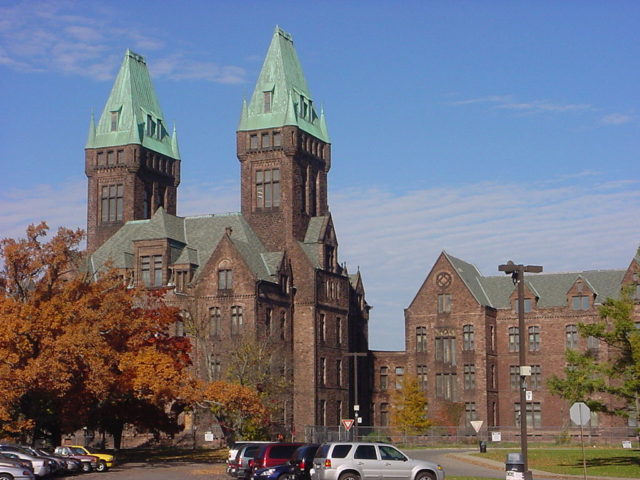
After being abandoned and neglected for years, the complex will finally be renovated and its cultural merit acknowledged, starting with the opening of the Hotel Henry resort later this year. In addition, the Main Tower Building will become the new Buffalo Architecture Center.
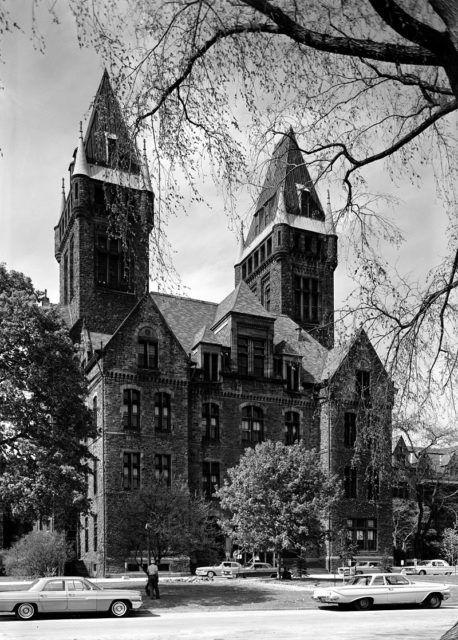
The building designs in the Kirkbride Plan are the work of Henry Hobson Richardson, one of America’s chief architects. The grounds were designed by landscape architect Frederick Law. The complex was completed in the late 1800s and it incorporated a system of enlightened treatment for people with mental illness developed by Dr. Thomas Story Kirkbride.
The Asylum had eleven buildings total, all connected by short curved two-story corridors, a central administrative tower, and five wards set back on each side. Male patients were located on the east side and females on the west. The site provided pleasant surroundings so that the patients could feel as comfortable as possible.
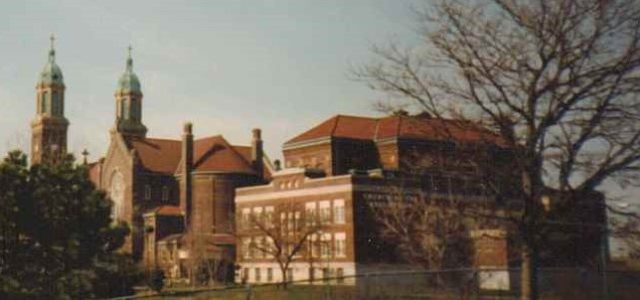
As the years went by, the mental health treatment and resources declined, which caused the buildings and grounds in the complex to slowly deteriorate. In 1927, the northern farmlands were given back to the state for the development and construction of the Buffalo State College. Nevertheless, the Asylum wards continued housing patients until the mid-1970s, and in 1973 the National Register of Historic Places added the estate to their archives. Thirteen years later, in 1986, it was dubbed a National Historic Landmark. Patient records from 1881 to 1975 can still be found in the New York State Archives in Albany.

From then on, the Richardson Olmsted Complex’s long and bumpy road to salvation started. Until 1994, the central administration building was used for offices, and three years later, the Pataki administration wanted to put the estate up for auction and make it available for private investment. Luckily, that didn’t happen. It took almost ten years of persuasion, efforts of volunteers, and a private hotelier for the site to be preserved.
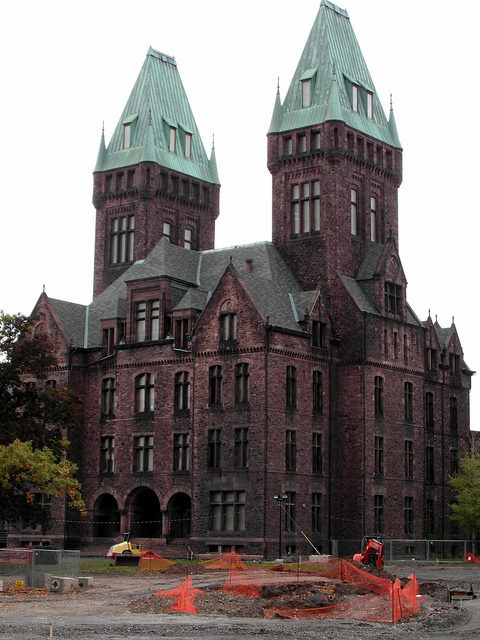
After a successful lawsuit by the Preservation Coalition of Erie County (renamed “Preservation Buffalo Niagara” in October 2008), the State of New York was forced to commit $100 million for the rehabilitation of the Richardson Complex. In 2006, they established the Richardson Center Corporation precisely for the purpose of reconstructing the site. The process began on 5 March 2008 with the renovation of the severely deteriorating and damaged hospital buildings and it was completed in 2012. All phases of the redevelopment used an active public process to inform the planning and reuse.
As one of the most architecturally distinguished buildings in Buffalo and a former home of the Buffalo State Hospital, the Richardson Olmsted Complex will soon shine again. This huge estate built in the Romanesque Revival style is almost completely revitalized and the Hotel Henry Resort and Conference Center awaits its opening on April 30.
